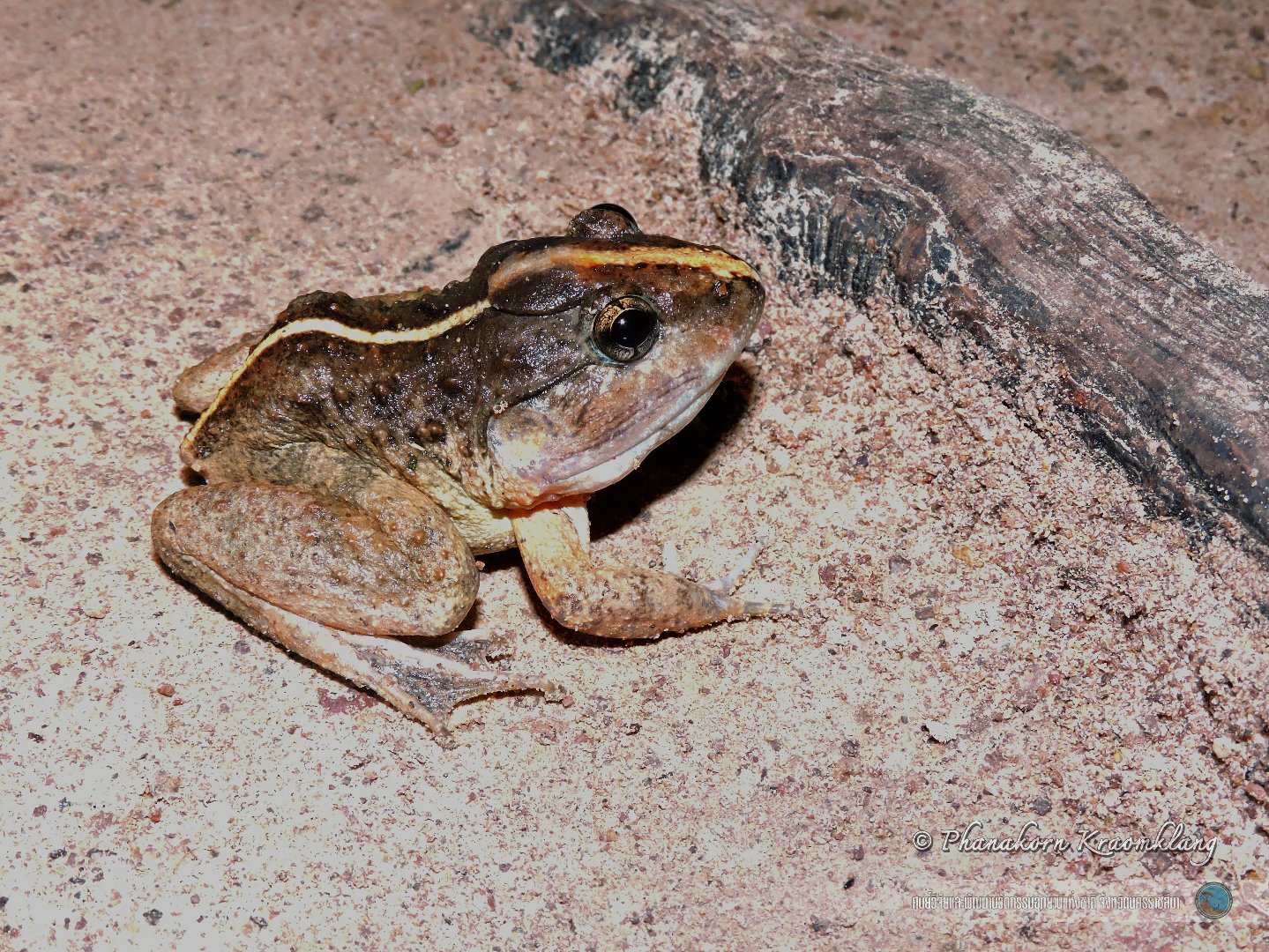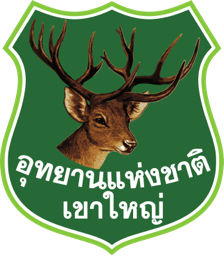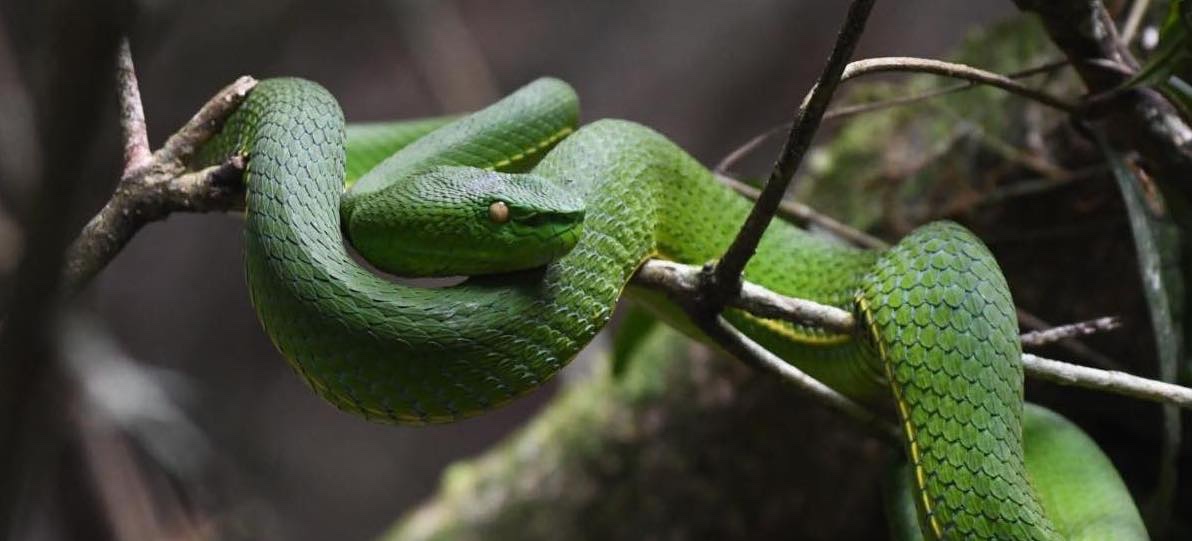
Reptile & Amphibians
Reptiles are family of vertebrates divided into four main groups: Squamata – lizards, chameleons and snakes, Testudines - turtles and tortoises, Crocodilia - alligators and crocodiles, and Tuatara or Rhynchocephalia, a group of lizards native to New Zealand. Reptiles and amphibians are both cold-blooded and reptiles’ bodies are covered with scales to prevent the evaporation of water, so they can live in dry environments. Some reptiles such as turtles and crocodilians also have bony plates to protect their skin. Juveniles do not change shape much as they develop to adulthood. They have two lungs which develop in the egg and two pairs of appendages. There have been many studies of reptiles in Khao Yai National Park, and many types may be seen such as the Malayan krait, Banded krait, gecko and chameleon.
Tree Monitor
Scientific Name : Varanus bengalensis
With a shape like the regular monitor lizard (V. Salvator), it is in the same family. They are often confused, but the tree monitor is much smaller and its nostrils are further away from the end of its jaw, which is blunter, and the colors of the tree monitor may include brown or black, unlike the regular monitor which has yellow patterns. Also, the tree monitor does not live near water. Neither does it swim or hunt in the water like a regular monitor lizard, and it is not aggressive. It lives in trees and is a proficient climber. It likes to bask in the sun on a branch, but hunts on the ground, preferring open to dense forest. It can be seen in the valleys, hunting by day. It will grip a branch to bask in the sun in the morning, and hide in tree hollows.

Chinese Water Dragon
Scientific Name : Physignathus cocincinus
The Chinese Water Dragon is the largest species of chameleon in Thailand. Its normal body colour is green, which it can change to be light or dark green depending on its surroundings. Some juveniles have a pretty blue or purple color under the chin and on the head. When fully grown, the male has a handsome crest on his head, which is smaller in the female. They like to bask in the sun on tree branches at the side of streams. When startled, they will run on two legs, holding up their forelegs. If there is a serious threat, they will dive underwater as they can stay underwater for a long time. They eat insects, frogs, small fish, small mammals and some kinds of fruit. They can also dive to catch fish.

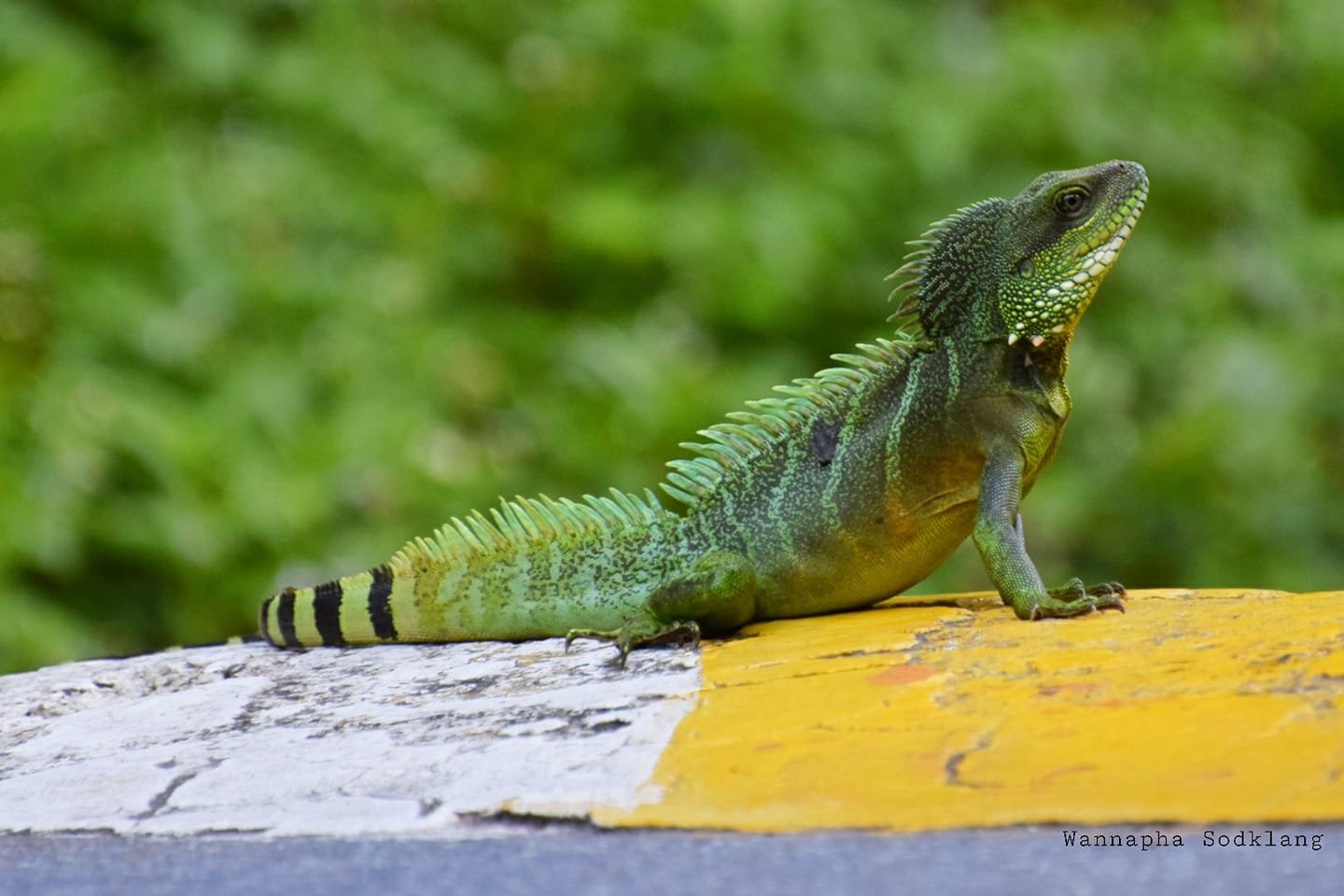

Scale-bellied Tree Lizard
Scientific Name : Acanthosaura lepidogaster
This reptile is also a chameleon measuring 27cm from nose to tail. Its horns are much shorter than other species and there are small spines. The male and female differ in color. The male is green with black spots or stripes has a white neck, with black protrusions on the nape, and a face covered as if with a mask. Around the mouth is bright red. The female is brown-grey or brown-red. They live in forests, in leaf litter or in small bushes, eating small insects, baby chameleons and earthworms.
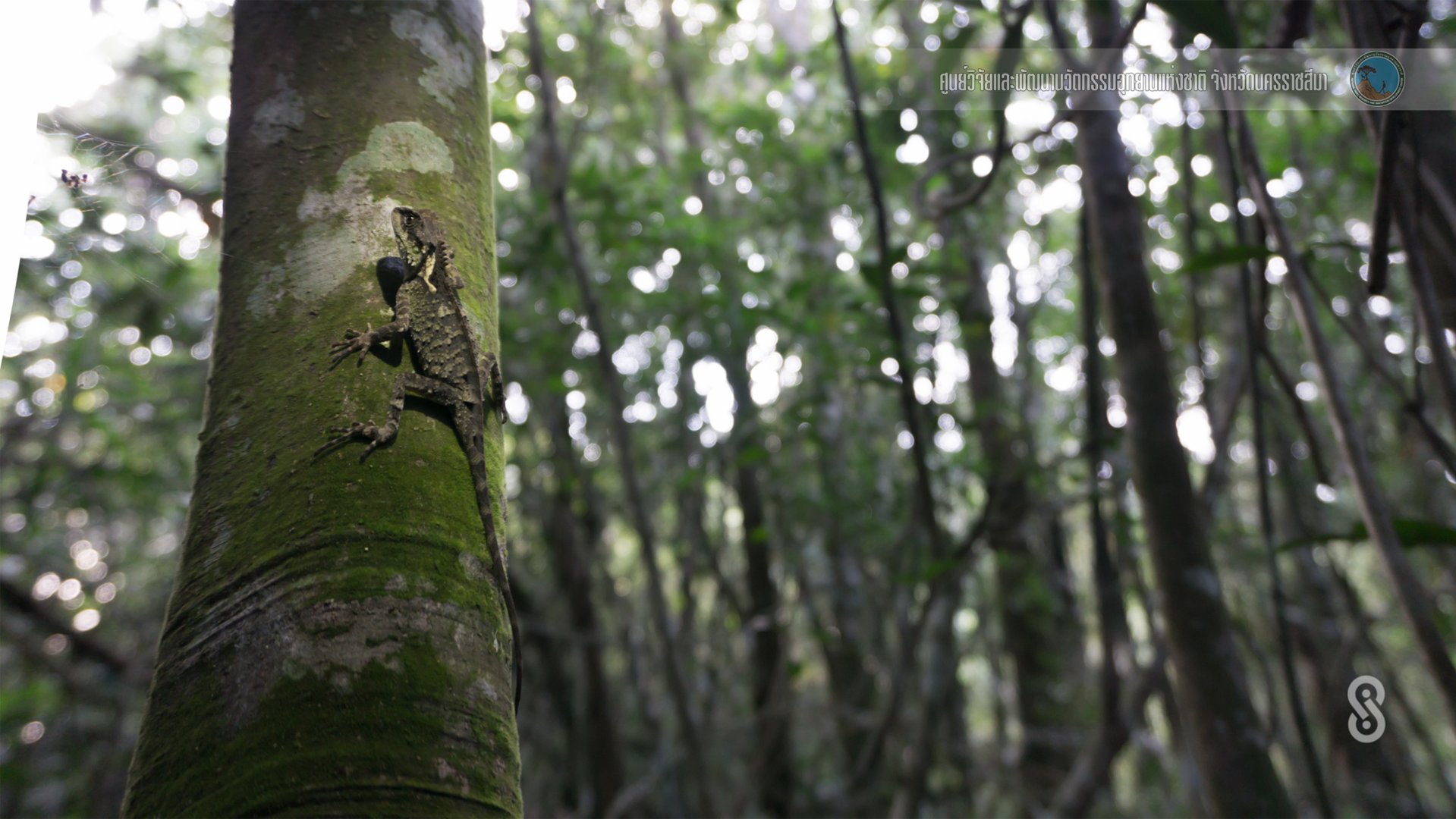
Greater Spiny Lizard
Scientific Name : Acanthosaura armata
Another chameleon, this lizard is 29cm long. The body is green and brown with a distinct pattern of large cream-brown-red spots. Above each eye is a sharp spine and a spiny ridge runs along its back. It eats insects such as mantids, grasshoppers and cockroaches.


Gunung Raya Green-crested Lizard
Scientific Name : Bronchocela rayaensis
This chameleon species measures 13cm from the end of its mouth to the base of its tail. The 45cm tail is long and tapering. It is yellow around the eyes, has a thin blue stripe behind its mouth, and its ear coverings are green. It does not have spines on its head, but a row of short, blunt spines on the nape of its neck, which are more prominent in the male than in the female. The body is a dark green with blue spots in rows. The tail is long and tapering and a brown-red color with dark stripes to the tip. When frightened, it can quickly change its color to brown or black. The bright green becomes a dark brown when it is threatened.

Reticulated Python
Scientific Name : Python reticulatus
This is the largest and longest snake in the world, with a large mouth, sharp fangs and a very strong jaw. Its body is red brown and a pattern of circles with many colors. On its head is a black stripe running to the end of its muzzle, while its underbelly is white. Pythons eat almost any kind of animal such as deer, rabbits, rats, chickens and birds. Sometimes it will catch fish. It is a non-venomous snake which crawls slowly and can be very aggressive. It feeds nocturnally, both on land and in the water, and lives in hollows of earth or trees which are dark and cool. It will come out to hunt after a period of many days.

King Cobra
Scientific Name : Ophiophagus hannah
The biggest venomous snake in the world, it has a large round head and a hood. It does not have rosettes like a regular cobra, but seeks to intimidate with a similar hissing noise. The smooth and long body is mostly a brownish-red with green, but there are other colors. The belly of the king cobra is a yellowish-white, under the throat red or orange. It likes to eat other snakes alive, but also eats rats, frogs and lizards. It is a ferocious snake which may creep slowly, but fast when it is startled. One third of its body length will stand fully erect with the hood outstretched. It lives in the forest and makes nests to lay eggs. The king cobra will bite and hold, not letting go. Its copious venom is a potent and fast-acting neurotoxin. It lays eggs once every year in a clutch of 20-40. It makes its nests in groves of bamboo and will incubate and hatch its eggs.
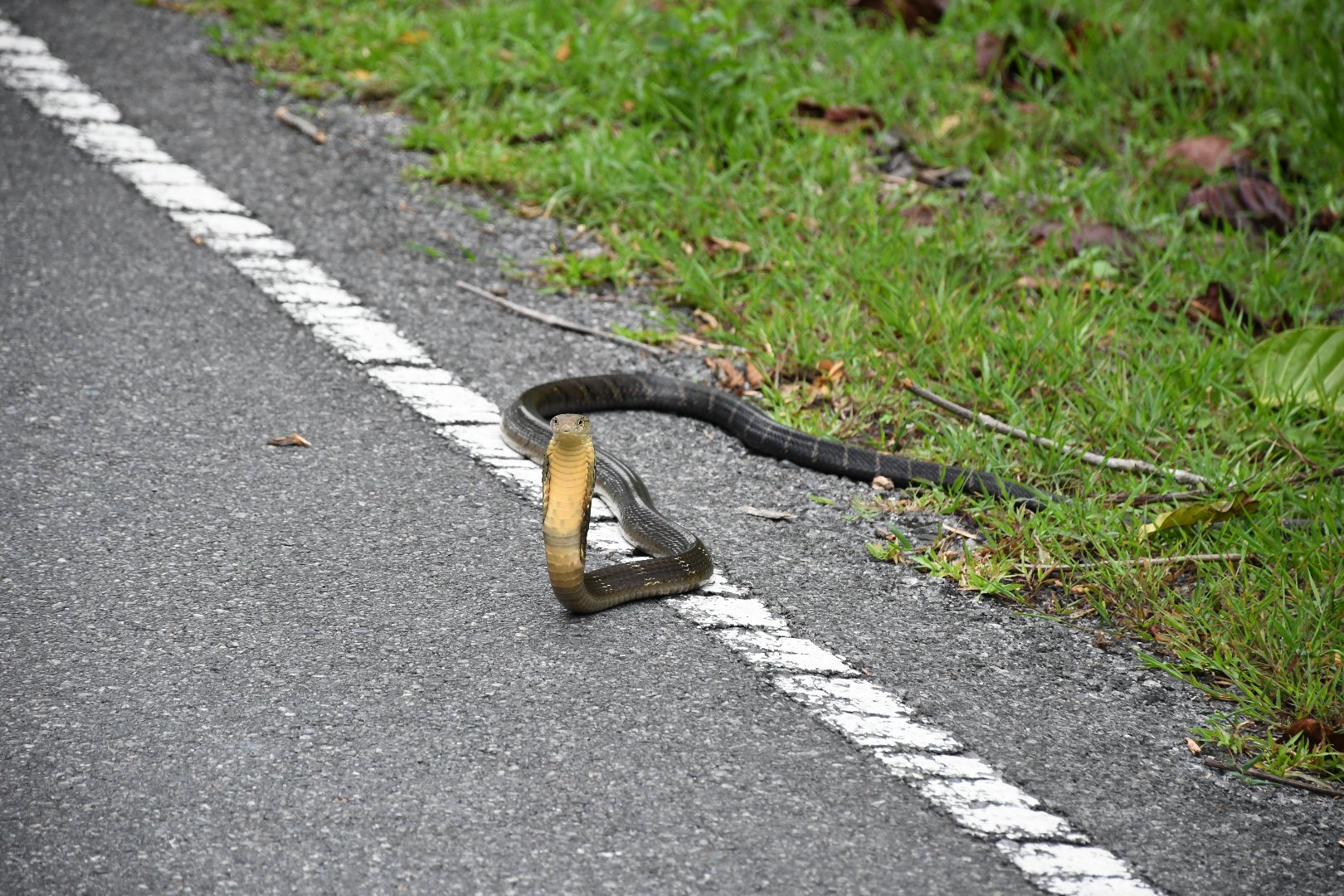
Vogel's Green Pitviper
Scientific Name : Trimeresurus
This is another dangerous and mildly venomous snake similar to other pit vipers, but is among the biggest. Around the mouth and under the belly is a lighter green, with a green tip to the tail. It has a smallish round head with heat sensors, and slit eyes like a cat. Its venom is hemotoxic and kills the muscle tissue of its victims.



Asian Leaf Turtle
Scientific Name : Cyclemys dentata
The head of this turtle is brown or olive green, and on top of its head is a black spot. At the sides of its head is a yellow or pink band. The lower part of the shell is a pale color, or completely black or dark brown, with clear lines. The joint between scales on the upper legs and the plate of scales at the end is curved. The bottom plate of the scale is like a hinge, and the upper shell is 22cm at full length. It prefers to live in water, in forest streams both at low elevations and in the mountains. It is omnivorous and will eat river plants, fruit, small crabs and other aquatic invertebrates.

Elongated, Yellow Tortoise
Scientific Name : Indotestudo elongata
The shell of this tortoise is 36cm long and has a high hump-back. On top is yellow with blue-grey markings. The head is yellow with small dark blue spots. It likes to live in deciduous forests and bamboo groves. While it primarily eats plants and fruit, it will also eat flesh such as animal carcasses and shellfish.
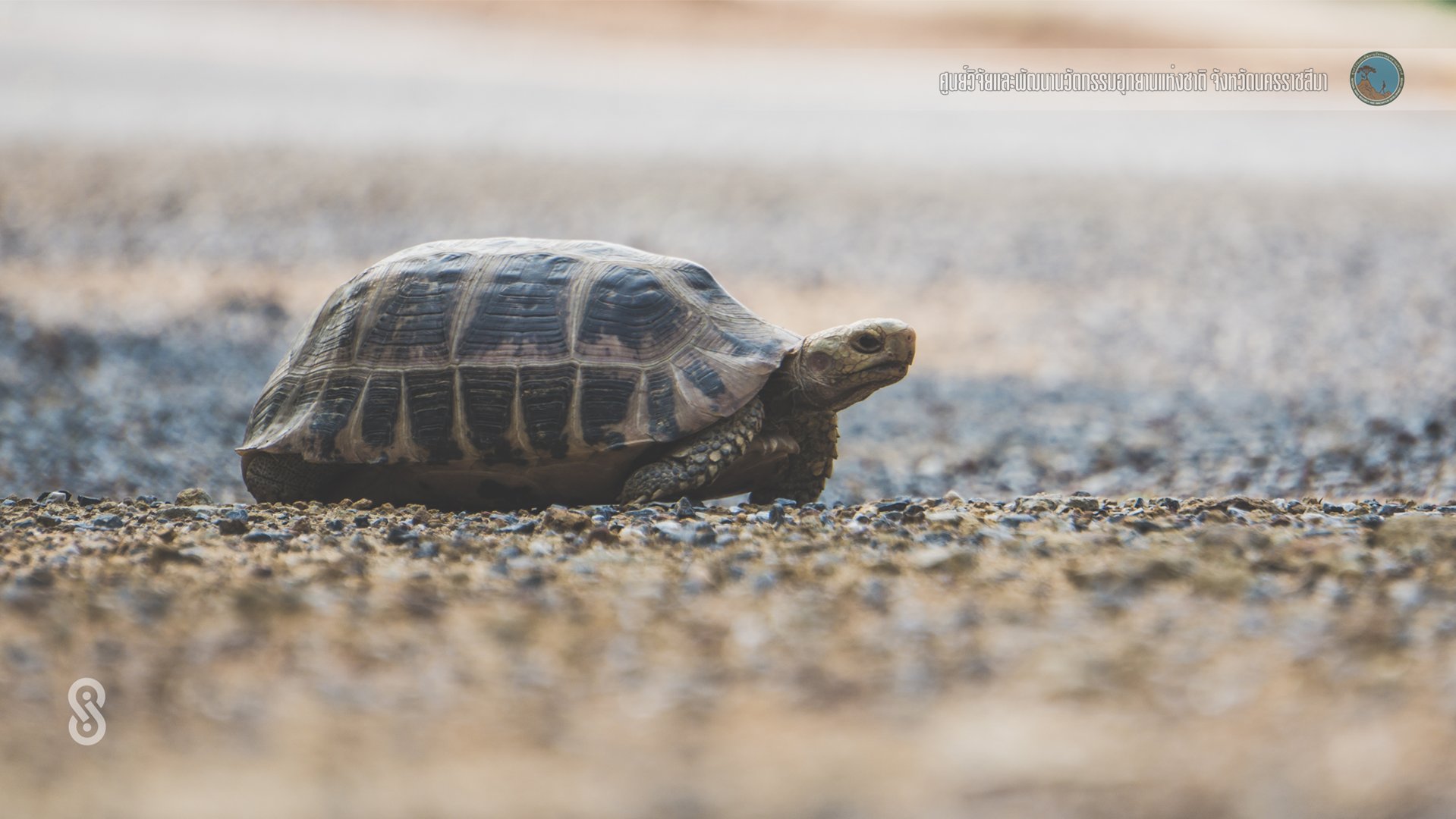
Mortensen's Frog
Scientific Name : Hylarana mortenseni
This is a medium-sized frog 50-71mm long. Its ear flaps are a clearly visible brown color. Its front digits are tapering and not webbed, while the rear digits have webbing almost along their entire length. The back is either brown, a yellow-brown or a grey-brown. A thin ridge runs from its nose to its tail on both sides, under which is a brown stripe passing over the ears. The back legs have a dark grey pattern, the belly is white and the throat and chest are brown. It is a common frog with a distinctive “ong-ong” call that gives it its Thai name. It was first discovered on Koh Chang in Trad. It likes to live by the sides of streams and rockpools, in rain forest at low elevations.


Berdmore's Chorus Frog
Scientific Name : Microhyla berdmorei
Berdmore’s chorus frog is a medium-sized frog is 30-45mm long, having a squat body and small, pointed head. The skin is covered with large and small protruding spots, and skin at the throat is wrinkled. Its back is grey or brown-grey. There is a dark pattern like a gourd in the middle of its back. The chin is grey while the belly is yellow white. The male’s chin and upper chest is black. Front and back legs have dark patterns across them, and above its rear are black spots. The front and back legs are tapering, and it folds its back legs close to its body pointing forward and protruding knees. The front digits have a small flap of black skin near the base, and the rear digits have almost full webbing. At the end of every digit is a round pustule with a long channel on top of it. Its tadpoles are very small and translucent. The front of their heads are blunt with eyes on either side. Black spots are spread all over the skin, most densely on the skull. The tail fin is tapering and translucent. The mouth is at the end of the body and the oral cavity is small without tooth-buds or a beak. It lives in hollow spaces near water in the forest.
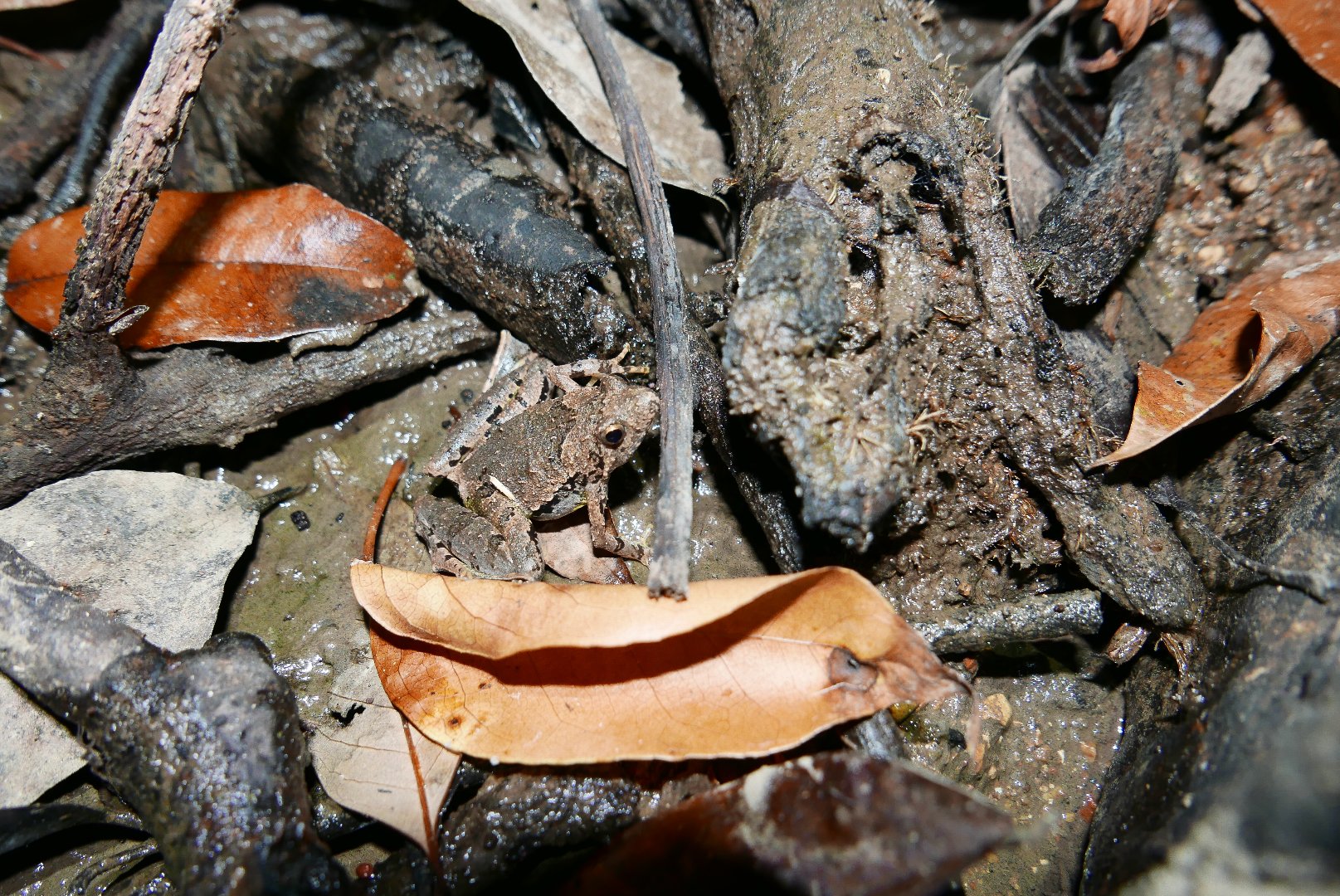
Capped Frog, Gyldenstolpe's Frog
Scientific Name : Limnonectes gyldenstolpei
This frog is 50-60mm long. The male has a large head. Between its eyes is a smooth, round protrusion, of which the back and sides don’t touch the head, which is its “cap”. The body color is a dark olive green with brown markings at the waist which fade out along the legs. The belly is light yellow. They mate and deposit spawn in pools at the side of streams and canals, and the male is responsible for its care. When disturbed, they will jump into undergrowth rather than into the water. When they jump into water, they will hide stock still, and not try to swim away like other kinds of frog.
